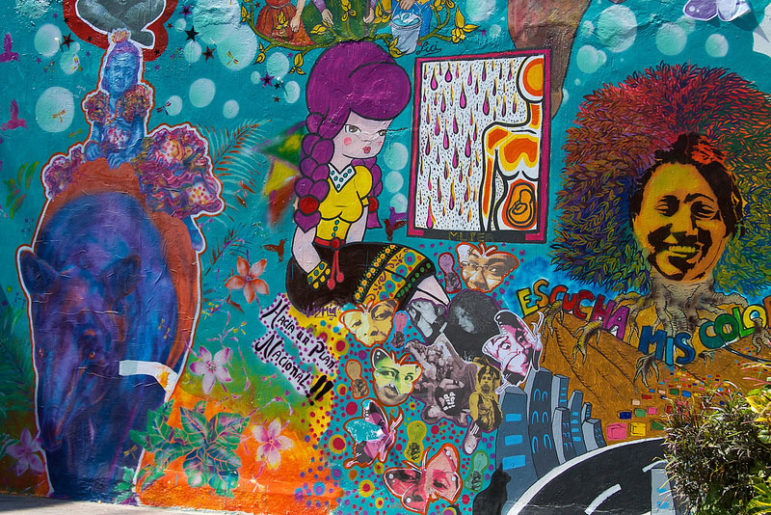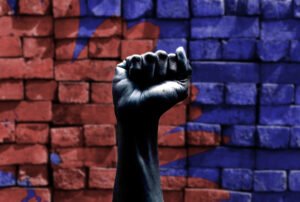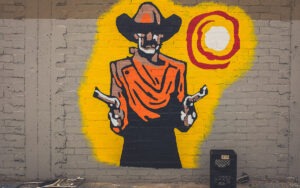
Many of us hear “sustainable development goals” and picture a poor rural village in Sierra Leone, or a hungry child in Bolivia. But the 17 goals that all 193 countries that are members of the United Nations (UN) adopted at a summit in 2015 aren’t just a framework for faraway international issues. In fact, many of the issues addressed by the Sustainable Development Goals (SDGs) are all too real in the U.S.: gender inequality, poverty, hunger, quality education, environmental sustainability…the list goes on.
And, here at home, these issues disproportionately affect communities of color. Inequality in the U.S. correlates to the color of people’s skin, to their parents’ last names, to the status of their legal residency, and to the zip code where they live. A working Latina mother living in Texas may not have heard of the SDGs, but she knows she’s worried about where her family’s next meal will come from. A black teenager in Chicago may not have heard of them, but he knows a diploma from his badly-performing high school won’t matter much to a college admissions counselor. And a Chinese immigrant working in a poorly-ventilated factory in New York knows her cough might not go away, but she also knows she can’t get good medical care without legal residency.
Last week in New York City, Hispanics in Philanthropy co-hosted an event with the Ford Foundation, ABFE, AAPIP, Native Americans in Philanthropy, Funders’ Committee for Civic Participation, CHANGE Philanthropy, and the Council on Foundations to discuss the SDGs and how the philanthropic community can harness their power to lift up communities of color in the U.S.
So, how can the SDGs help? Broadly, in three ways:
Sign up for our free newsletters
Subscribe to NPQ's newsletters to have our top stories delivered directly to your inbox.
By signing up, you agree to our privacy policy and terms of use, and to receive messages from NPQ and our partners.
- They are a promising way for all of us from different sectors and communities to unite under common goals. Already, philanthropists, governments, and the private sectorhave come together to start working toward the same targets. Together, our impact will be much larger than apart.
- In this world of big data, the SDGs offer a powerful way for us to measure the collective impact of our work. The methodologies for tracking progress on the SDGs are still in development, and many countries lacking robust data collection will face challenges. However, even at this early stage, we’re already seeing actionable data analysis become available, as evidenced by the UN SDG Live Tracker
- The SDGs provide immense momentum to help us continue building on the decades of work that many of us have already been doing. They have the input and backing of millions of people from around the world. If we work together to harness this forward movement, we can create powerful change.
But for the SDGs to have a real impact in the U.S., it is critical that we remember to include the voices of those most impacted by the issues—such as communities of color. And, especially in this fraught election season, I can’t help but emphasize the importance of collectively working to engage communities of color in the democratic process.
Historically, many minority groups have opted out of voting. They’re frustrated, disappointed, and disengaged. And they have many good reasons to feel this way, in particular the legal and structural barriers that make it truly challenging to vote, secure a good education, and move up the socioeconomic ladder in this country if you are low-income and a person of color.
For us to achieve many of the SDGs, we need to listen to and involve these communities. They need to be at the table when powerful players like governments, philanthropic institutions, and corporations shape policies and strategies that support long-term equity: improved education, a higher minimum wage, improved benefits for working mothers, and reformed immigration laws, among others.
As powerful as they are, the SDGs are just a seed. For them to grow in our communities, and for them to have a real impact, we all need to work together to nurture them. That means working with diverse stakeholders. That means discussing and agreeing on collaborative goals. And that means involving the grassroots organizations—the church food pantries, community centers, and small nonprofits—that truly understand the needs of our communities.













